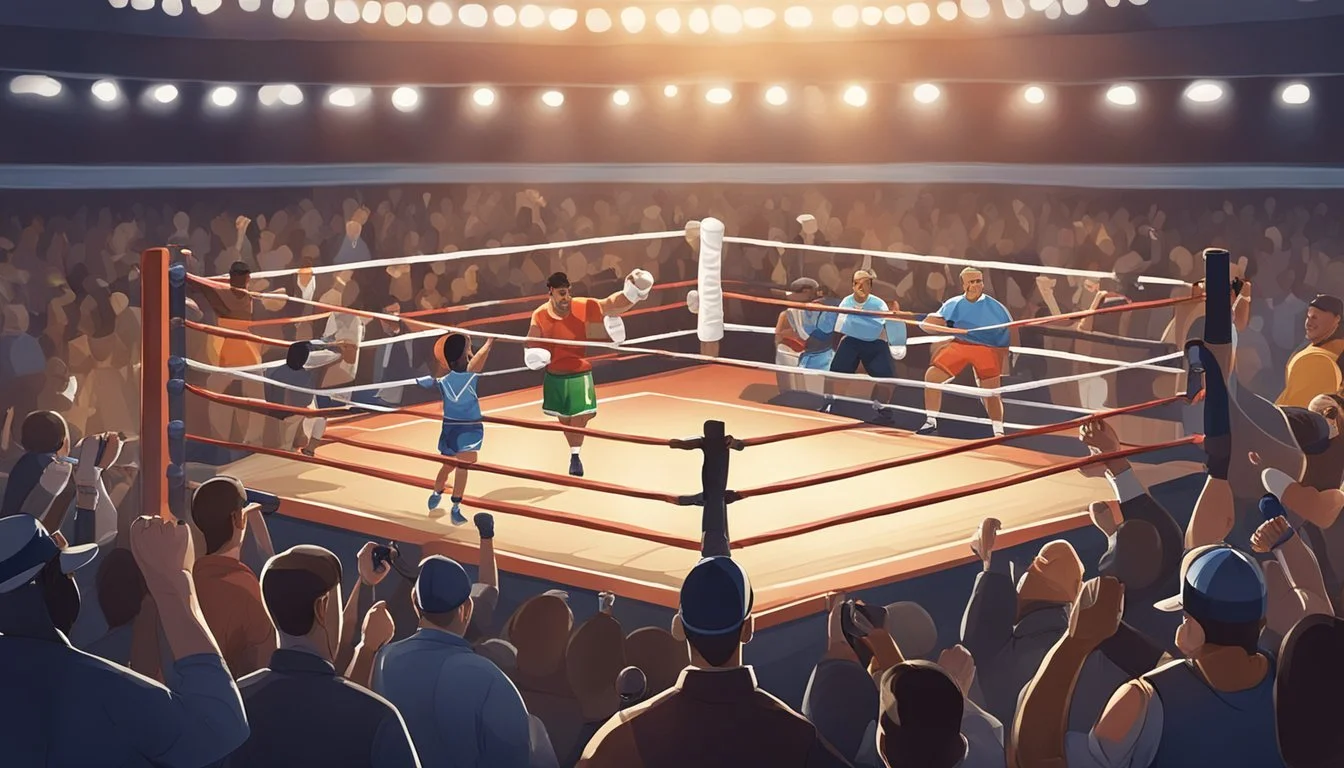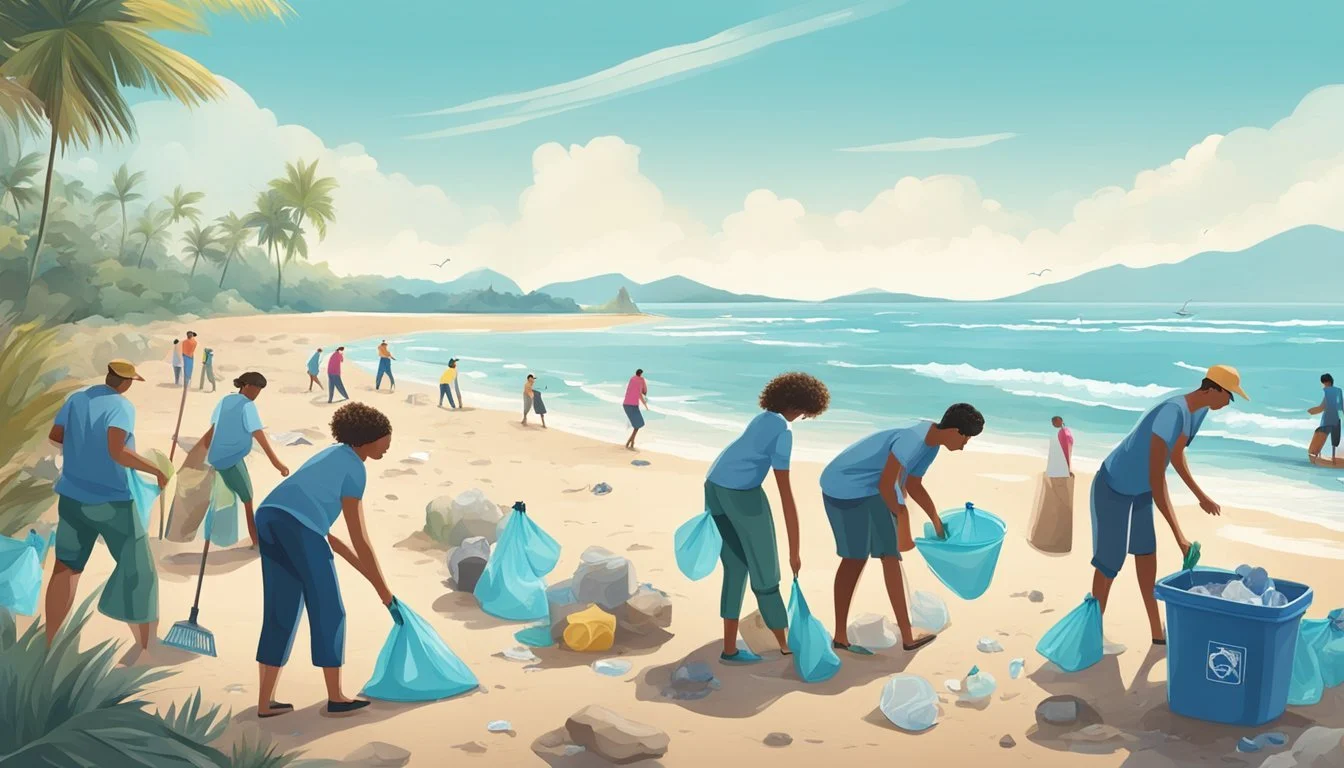Boxed Water vs. Action
An In-depth Comparison of Bottled Water Quality
In the debate of boxed water versus bottled water, environmental impact, taste, and convenience are key considerations. Boxed Water Is Better, a pioneer since 2009, offers a sustainable alternative to traditional plastic bottles, using paper-based packaging that aims to reduce environmental harm. This eco-friendly approach appeals to those looking to minimize their carbon footprint.
Boxed Water's packaging, which primarily uses paper, positions it as a more sustainable choice compared to plastic and aluminum options. Additionally, the purified taste of Boxed Water, achieved through ultraviolet and reverse-osmosis filtration, has garnered positive reviews for its crispness and refreshing quality. Despite these benefits, the availability of carton recycling facilities and the practicality of boxed packaging in various scenarios remain factors to consider.
Ultimately, the choice between boxed and bottled water hinges on balancing environmental benefits, taste preferences, and convenience. As consumers become more environmentally conscious, the push towards sustainable packaging like Boxed Water could significantly impact future purchasing decisions.
Overview of Boxed and Bottled Water
Boxed and bottled water have distinct characteristics, influenced by their materials, environmental impacts, and market presence. Understanding these aspects helps in evaluating their benefits and drawbacks.
Defining Boxed Water and Bottled Water
Boxed Water is typically packaged in cartons made from sustainable materials such as paper, plastic, and aluminum. These cartons resemble milk cartons and claim to have lower environmental impacts compared to traditional water packaging. Brands like Boxed Water Is Better focus on reducing plastic waste and promoting recyclability.
Bottled Water is mainly packaged in plastic or glass bottles. Plastic bottles are omnipresent due to low cost and convenience, although they contribute significantly to plastic pollution. Glass bottles, while offering a recyclable option, are heavier and less commonly used. Both types are widely available and come in various sizes and brands.
Historical Context and Current Trends
The concept of Boxed Water emerged in 2009 with the founding of Boxed Water Is Better. The company aimed to provide a more sustainable alternative to plastic bottles by using paper-based cartons. These efforts align with current global trends focusing on reducing single-use plastics and boosting recycling efforts.
Bottled Water has been a staple for much longer, with its rise in popularity tied to increased health consciousness and convenience. Plastic bottles dominated the market due to their lightweight and durable nature. Recent trends, however, show a shift towards more sustainable practices, with some companies exploring recyclable and biodegradable materials. Glass bottles are also seeing a resurgence owing to their eco-friendly characteristics.
Environmental Impact
Boxed Water and traditional bottled water differ significantly in their environmental impact, particularly in terms of carbon footprint, waste and recycling challenges, and long-term ecological effects.
Carbon Footprint Analysis
Boxed Water claims packaging that is 92% plant-based, reducing reliance on non-renewable resources. This contrasts with traditional plastic bottles, which are derived from petroleum.
The production process of Boxed Water generally results in fewer greenhouse gas emissions. Plastic bottles, in comparison, have a high carbon footprint due to energy-intensive manufacturing and the extraction of raw materials.
Choosing Boxed Water over single-use plastic bottles can therefore contribute significantly to reducing one's personal carbon footprint.
Waste and Recycling Challenges
While Boxed Water uses cartons composed mainly of paper, these also include small amounts of plastic and aluminum. Carton recycling infrastructure is less common than plastic recycling facilities.
Plastic bottles are widely recyclable, but the low recycling rates lead to substantial amounts ending up in landfills or oceans, contributing to microplastics pollution. Boxed Water's effectiveness hinges on appropriate recycling systems being available and utilized.
The dual-material nature of cartons adds complexity to their recycling process compared to single-material plastic bottles.
Assessing Long-Term Ecological Effect
Plastic bottles are notorious for their persistent environmental presence, taking hundreds of years to decompose. They contribute heavily to landfill volume and ocean pollution.
Boxed Water, thanks to its plant-based materials, is more biodegradable, reducing long-term waste. Yet, if not properly disposed of, the plastic and aluminum components can still add to environmental detriment.
By promoting sustainability, Boxed Water aims to mitigate these issues, but the actual ecological benefits depend largely on consumer behavior and available recycling infrastructure.
Health and Consumption
When considering the health and consumption aspects of boxed water, it's essential to evaluate both the hydration benefits and the safety measures taken to ensure purity.
Hydration and Health Benefits
Hydration is fundamental to maintaining bodily functions such as digestion, circulation, and temperature regulation. Both Boxed Water and traditional bottled water offer these benefits. Boxed Water, often purified through advanced filtration methods like reverse osmosis, ensures clean, refreshing hydration.
Drinking water helps in skin health, cognitive function, and energy levels. While some people prefer flavored water with natural infusions like lemon or grapefruit, Boxed Water typically offers plain tasting water which can encourage more frequent drinking due to its neutral taste.
Safety and Purity of Water Sources
The safety and purity of the water source are paramount. Boxed Water undergoes rigorous filtration including ultraviolet, carbon, and reverse-osmosis to eliminate impurities. This ensures the water is free of contaminants, providing a healthier alternative compared to certain untreated tap water sources.
Moreover, the packaging of Boxed Water is designed to minimize the risk of BPA and other harmful chemicals, making it a safer choice for daily consumption. Ensuring that the water is properly sealed and stored also helps maintain its purity and safety, reducing risks of contamination.
Design and Materials
Boxed Water and Action Bottled Water differ significantly in their design and materials. Boxed Water focuses on sustainability with mixed-material packages, while Action Bottled Water traditionally uses single-material options like plastic or glass.
Innovative Packaging Solutions
Boxed Water uses cartons that blend sustainable paper (74%), aluminum (1%), and plastic film (25%). This design is both functional and environmentally friendly, aiming to reduce plastic waste. The packaging's milk box-style design stands out for its fun and minimalist look. This design choice also aligns with their eco-friendly mission.
Action Bottled Water often opts for more conventional packaging. Their bottles are typically made from plastic or glass, materials well-known for their durability but not always seen as sustainable. Some versions emphasize ergonomic designs to enhance user experience but may fall short on environmental responsibility.
Material Pros and Cons
Paper and aluminum in Boxed Water's packaging score high on recyclability and sustainability. The carton is 100% recyclable, significantly reducing environmental impact. Plastic film, though essential for waterproofing, raises concerns about its limited recycling capabilities. Despite these concerns, the overall material mix prioritizes sustainability.
Action Bottled Water's plastic bottles are durable and lightweight, easy to manufacture, and familiar to consumers. However, they contribute significantly to plastic waste and environmental pollution. Glass bottles offer a more sustainable option because they are 100% recyclable and do not leach chemicals, but they are heavier and more fragile, impacting transportation efficiency.
By comparing the design integrity and materials of both Boxed Water and Action Bottled Water, consumers can make more informed decisions based on sustainability preferences and practical needs.
Sustainability Practices
When comparing Boxed Water and Action bottled water brands, their sustainability practices are essential components to consider. Key factors include the materials used in packaging and the certifications they hold.
Comparison of Sustainability Claims
Boxed Water claims its cartons are made from 74% paper, 1% aluminum, and 25% plastic film. This mix aims to reduce reliance on plastics and utilize renewable resources. The paper used comes from well-managed, sustainable forests.
Action bottled water, meanwhile, emphasizes the use of recycled and recyclable materials in their packaging. They focus on minimizing carbon footprints by using lightweight materials and promoting reusability. Both brands aim to lower environmental impact through innovative packaging solutions.
Industry Certifications and Standards
Boxed Water holds several certifications to validate its sustainability claims, such as Forest Stewardship Council (FSC) certification. This confirms the paper in its cartons comes from sustainably and responsibly managed forests. Additionally, Boxed Water supports reforestation foundations, contributing to environmental restoration.
Action bottled water also seeks certifications like Cradle to Cradle, which assesses products for safe and sustainable design. Their alignment with industry standards emphasizes transparency and accountability, reducing the risk of greenwashing.
These certifications and standards play crucial roles in verifying the environmental benefits boasted by each brand, ensuring consumers can trust their sustainability claims.
Community and Social Responsibility
This section covers the corporate social responsibility initiatives of Boxed Water, consumer choices and alternatives, the product life cycle and distribution, case studies and endorsements, and future perspectives.
Corporate Social Responsibility Initiatives
Boxed Water is committed to several corporate social responsibility initiatives. One of their primary goals is reducing the environmental footprint of packaged water by using cartons made mainly from paper.
Instead of single-use plastic bottles, Boxed Water uses 92% plant-based cartons. The company also supports reforestation projects and partners with organizations to plant trees.
They aim to plant a million trees within the next few years, contributing significantly to global reforestation efforts. Additionally, Boxed Water's packaging method uses less energy compared to traditional plastic water bottle production.
Consumer Choices and Alternatives
Consumers have a variety of choices when it comes to sustainable water packaging. Boxed Water stands out due to its carton-based packaging, which can be recycled more efficiently compared to plastic bottles.
Refillable water containers and reusable water bottles are notable alternatives. These options promote the reduction of single-use plastics, which often end up in landfills.
Many consumers also look for ergonomic designs in their reusable containers for convenience. Apart from the sustainability aspect, choosing Boxed Water contributes to larger environmental and community initiatives that resonate with responsible consumption.
Product Life Cycle and Distribution
The life cycle of Boxed Water starts with sustainably harvested paper used for its cartons. These cartons are then shipped to filling stations, where the water undergoes purification processes like ultraviolet light, carbon filtration, and reverse osmosis.
Distribution includes partnerships with various retailers and airlines such as Alaska Airlines. This ensures that Boxed Water is accessible to a wide audience.
Recycling the cartons is facilitated by numerous carton recycling programs, making it easier for consumers to properly dispose of the used packaging. This significantly reduces the product's environmental impact.
Case Studies and Endorsements
Boxed Water has received endorsements from numerous influential entities and has partnered with sustainability-focused organizations. Alaska Airlines has adopted Boxed Water as part of its commitment to reduce plastic waste on flights.
It's also used in many sustainability-focused art projects, highlighting its eco-friendly benefits.
Celebrities and influencers endorsing Boxed Water further bring attention to the environmental benefits of choosing sustainable water packaging solutions. These endorsements have helped amplify the brand's message and reach a broader audience committed to environmental responsibility.
Looking Forward
Looking ahead, Boxed Water plans to continue innovating its product to make it even more sustainable. They aim to increase the percentage of plant-based materials in their packaging and improve the efficiency of their distribution networks.
Future goals also include expanding their tree-planting initiatives, aiming to plant millions more trees in collaboration with environmental organizations.
Boxed Water's commitment to sustainability may set new standards in the beverage industry, encouraging more companies to adopt similar practices. As more consumers demand eco-friendly options, Boxed Water looks poised to lead the charge in sustainable packaged water solutions.





